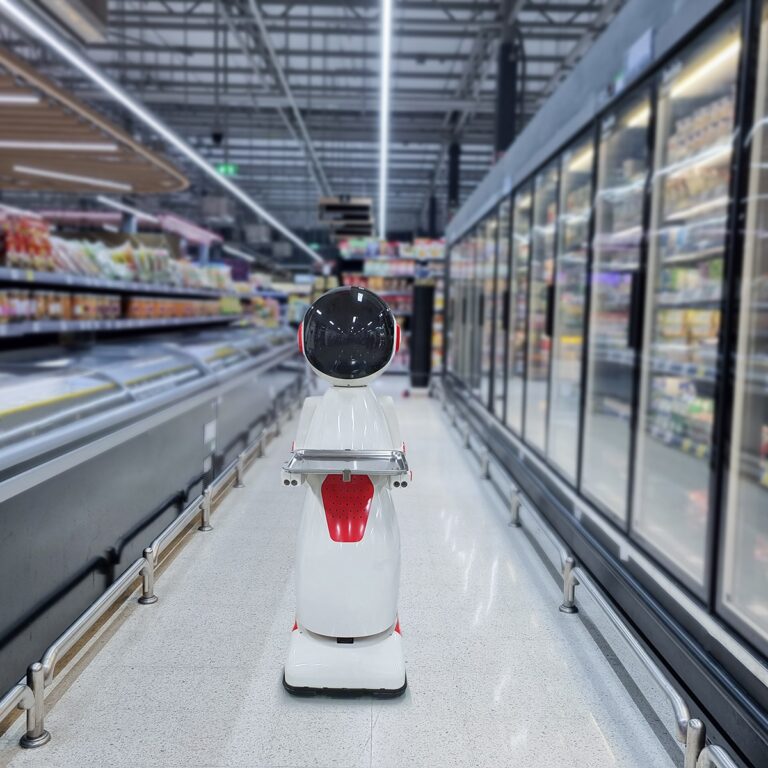AI is like your favorite store clerk who’s creepily obsessed with your shopping habits; it can infiltrate nearly every nook and cranny of retail operations, from customer service to inventory management—and even the real estate business if it’s feeling particularly adventurous.
1. Personalized Customer Experience
Imagine walking into a department store and having your shopping list written in the stars. That’s AI for you! It analyses data like a bored philosopher reading an epic novel, combining your browsing history, order history, and that loyalty program you forgot you signed up for, just to recommend a coat you absolutely don’t need. In a twist of fate, AI chatbots are here to engage you in existential conversations about the coat’s “wearability” for various life events—just what you needed while standing in your messy living room.
2. Improved Cross-Selling Opportunities
With supply chain disruptions dancing around like an out-of-control flash mob, grocery retailers are pivoting so fast you’d think they were on “Dancing with the Stars.” They’re busy rethinking their entire fulfillment models—because who doesn’t want their oat milk delivered to a 12-hour delay? Now they’re tying their planning decisions to demand forecasts, inventory management, and possibly a psychic or two to keep up with consumer whims.
3. Automated Inventory Management
Picture a small grocery chain, employing AI to time the dairy shuffle like a well-orchestrated ballet—“To the left, to the right, now slide!” Meanwhile, a colossal European supermarket has decided that replenishing the shelves during lunch hours is its own version of extreme sports. Because who wouldn’t want to dodge a wild-flailing stock clerk while hunting down that afternoon snack?
4. Demand Forecasting
Why guess when you can be confidently wrong? Retailers are using AI to predict demand with as much accuracy as your uncle at the Thanksgiving table predicting the weather. By analyzing everything from sales data to factors that are statistically obscure (hello, random third-party weather updates), they can anticipate which item will sell better—spoiler alert: it’s usually the chocolate.
5. Frictionless Shopping
In a world where fast and frictionless shopping reigns supreme, retailers are deploying AI to create checkout-less environments. You can waltz into a store, swipe items from shelves, and escape like a ninja. Forget about that awkward moment in line; just grab and go! Never mind that you didn’t really want that last-minute avocado. Those cashier lanes? They’ve been turned into miniature art galleries, because who needs to check out when you can check out?
6. Optimized Pricing
Ah yes, pricing strategies powered by AI: it’s like a bad romantic comedy where pricing decisions are calculated based on competitor prices, local demographics, and perhaps the astrological signs of shoppers. Set the price too high, and you might just send your dedicated customers scurrying to your rival’s store faster than you can say “discount code.” But set it too low, and you’ll be treating your product like that old couch nobody wants—just there, devalued, and alone.
7. Dynamic Merchandising
AI joins the merchandising party, suggesting “you also might want this” as if it were your overly eager best friend trying to convince you to buy that hideous sweater. It analyzes your purchase history like a nosy neighbor and makes sure you’re never without a vast selection of items you never knew you wanted. Yes, AI can help you clear out the stock on slow-moving items, but isn’t that just a fancy way of saying “let’s get these off the shelf so we can make room for our next marketing disaster”?
8. In-Store Robots
Move over humans; AI-powered in-store robots are here to collect data like a clingy ex. Equipped with sensors and cameras, these robots can pinpoint areas of the store where customers seem to avoid like a tomato at a picnic, suggesting replacement goods that are “juicier”—or at least trendier. Oh, and they might flash a promotion on your phone just to make your shopping experience feel slightly more invasive. After all, what’s shopping without a hint of surveillance?
9. Smart Stores
The smart store is like the overzealous personal trainer of retail; it’s keeping tabs on foot traffic and eliminating dead zones faster than your diet resolution. By analyzing customer behavior, these “smart” spaces can suggest better-product placement and even pop up targeted promotions, turning you into a walking advertisement. Who knew grocery shopping could come with a side of unsolicited advice?
10. Supply Chain Optimization
With supply chain disruptions more unpredictable than a toddler on a sugar rush, retailers are leveraging AI to decode a mind-bending list of factors affecting inventory. Picture a convenience store chain harnessing the chaotic essence of machine learning—weather patterns, trending hashtags, and even the latest TikTok dance—just to keep your favorite snacks in stock. Because let’s face it: if your chips are out of stock, what’s the point of even going?

